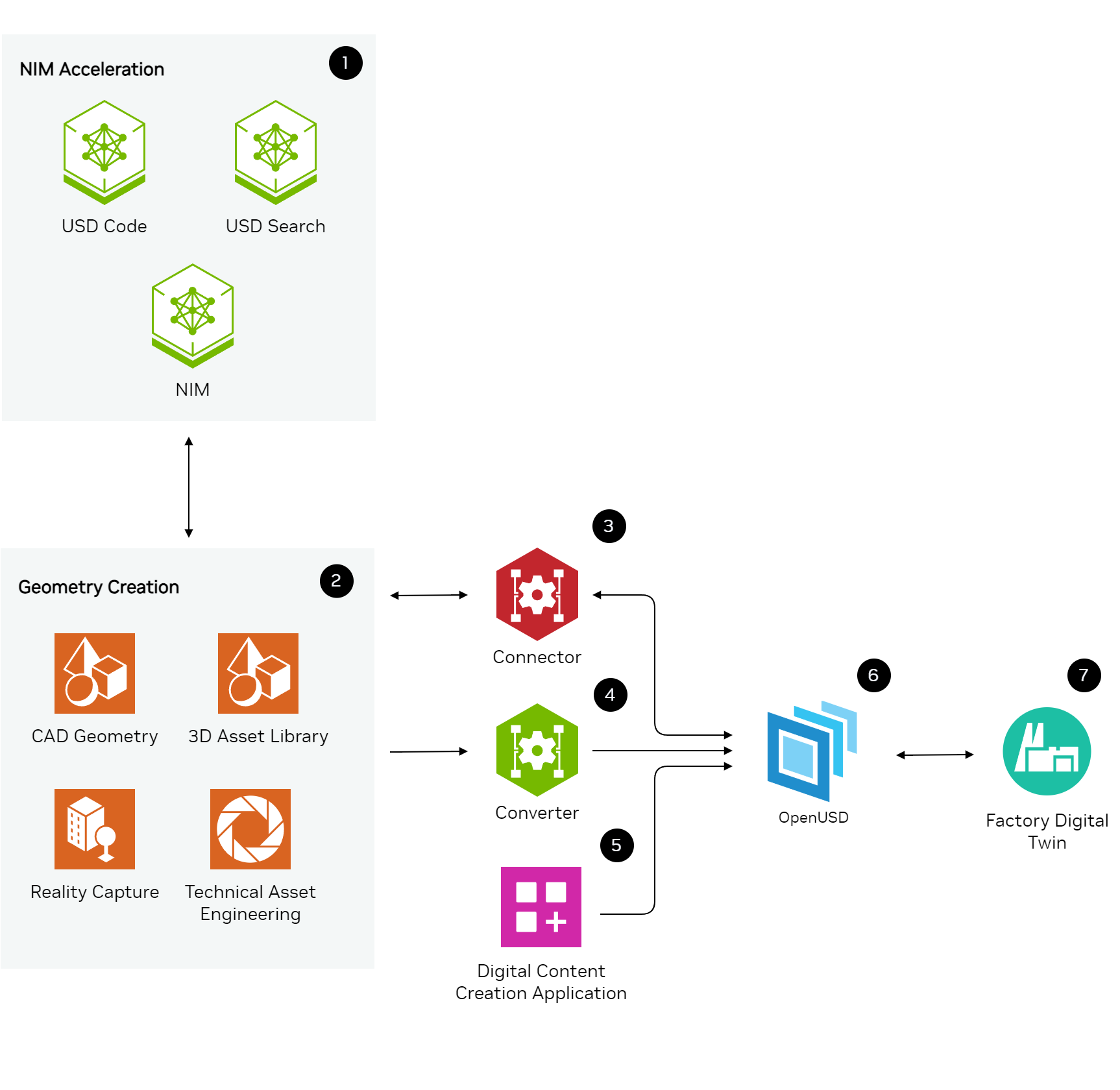Geometry Creation#
The following architecture diagram represents how geometry can be incorporated into a factory digital twin. It is a representational rather than an explicit workflow demonstrating how a geometry and OpenUSD can be used to create a factory digital twin.

NIM Acceleration#
NVIDIA Inference Models (NIMs) are cloud-based, AI tools. Developers can deploy their own NIMs as NVIDIA NIM Microservices.
USD Search uses AI to identify USD assets from an asset library using only asset thumbnails.
USD Code is an LLM that has been trained on the USD specification and can assist in writing python extensions for Omniverse.
Augmentation can help augment synthetic data sets through AI features such as inpainting and outpainting.
Geometry Creation#
Geometry can come from a variety of data sources and formats and can be created in Computer Aided Design (CAD) or other 3D modeling software.
Large libraries of standard 3D parts exist and can be an excellent resource for building digital twins.
Scenes can be created from manual or automated reality captures. These scenes can be captured one-time or through automated processes with individual or multiple hardware devices such as terrestrial laser scanners, mobile mapping systems and GNSS smart antennas.
Technical Asset Engineers can develop photorealistic textures for 3D assets that include artifacts such as wear and tear, dirt, and defects.
OpenUSD Connector#
A connector can translate between many direct content creation applications and OpenUSD. Connectors can work in real time or via batch processing; they can support one-directional or bi-directional connections.
OpenUSD Converter#
A converter performs a one-time conversion from a 3D format to OpenUSD.
Digital Content Creation Application#
Some digital content creation applications work natively with OpenUSD.
OpenUSD#
Geometry from heterogeneous sources can be unified with the OpenUSD format through connectors, converters, importers and direct authoring tools.
Factory Digital Twin#
Once geometry is in the OpenUSD format, a scene can be composed to develop the digital twin of the factory in question.
Conclusion#
Authoring geometry is a critical task when generating a factory digital twin. By using OpenUSD as a neutral format, numerous heterogeneous data sources can interoperate, facilitating the creation of a factory digital twin.